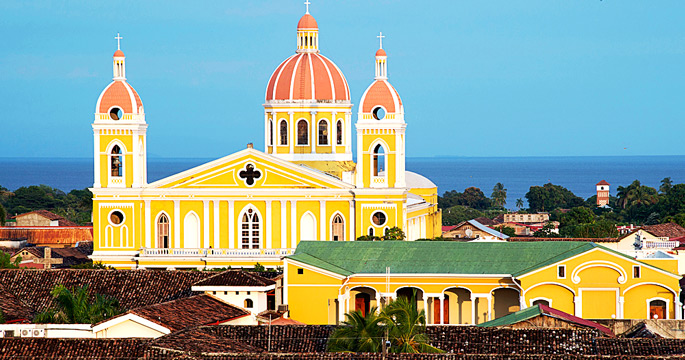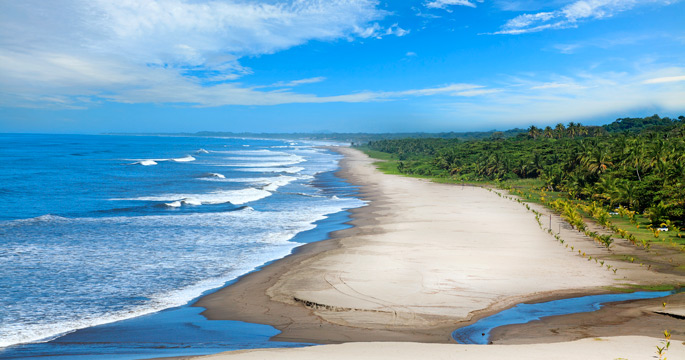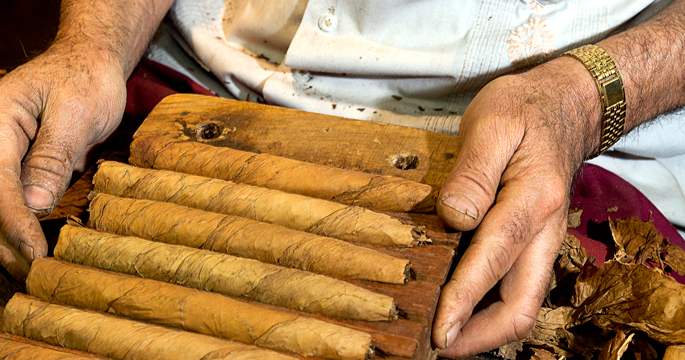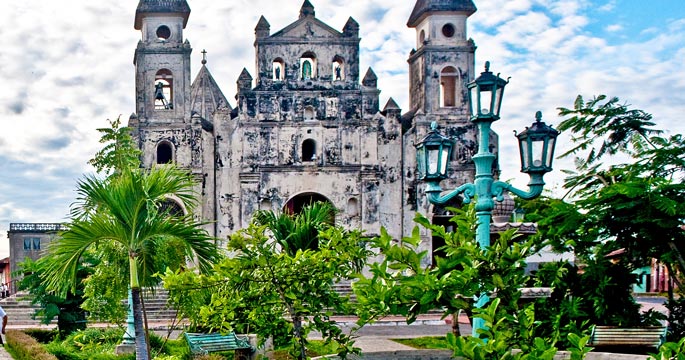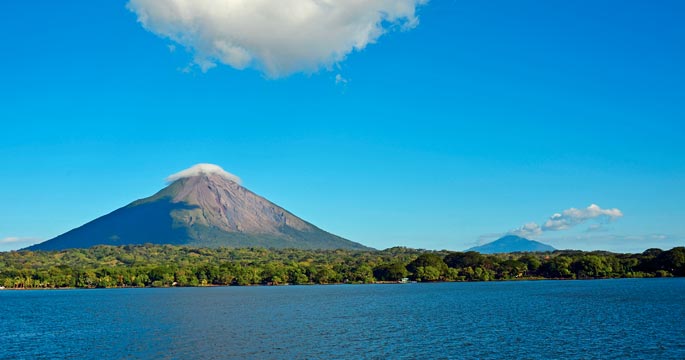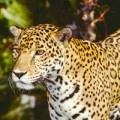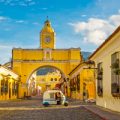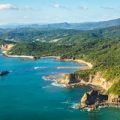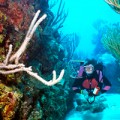Central America’s largest country offers a different brand of vacation experience. It is a land where nature trumps high rises and traditions have not been eroded by pop culture. Here you will find a people who look towards a brighter tomorrow as the country’s economy continues to gain momentum, but also remain firmly rooted in the ways of their forefathers, and tolerant of the varied cultural roots that blend and complement the national identity.
1 Land of Poets
Poetry is a national passion. It is a tradition that dates back to Nobel Prize-nominated laureate Rubén Darío, who’s most famous work, Margarita Debayle, can be quoted verbatim by many Nicaraguans. The nation’s love of verse begins in elementary school, and people of all classes from farmers to politicians not only read and appreciate the art form, but also test their own writing talents and greet each other with cries of “poet” in the same way surfers use “dude.” Each year, the city of Granada hosts an international festival that draws top poets from around the world to share and celebrate their works.
2 Volcanic Vibes
The landscape of western Nicaragua is dominated by a line of more than 50 active and dormant volcanoes that stretch some 200 miles north to south and rise to heights of more than a mile. Past activity has created rich soils where crops such as coffee thrive, and verdant cloud forests grow on elevated slopes. Still-active volcanoes send up smoke signals and create bubbling, sulfurous hot springs. Some rise in symmetrical cinder cones, while others are the jagged remains of mountains that blew their tops thousands of years ago, and now form expansive craters where one can hike down to ground zero of historic eruptions.
3 Water Wonders
Geological forces have graced Nicaragua with an abundance of lakes. In all, these bodies of fresh water make up a tenth of the country’s total area. Some are mere slivers of blue tucked within mountain craters, and others are small lagoons hidden deep in the jungle. But also on the roster are the two largest lakes in Central America: Lake Managua and massive Lake Nicaragua, which stretches 100 miles in length and measures as much as 45 miles across. These waters are home to 45 species of fish, including sporting favorites such as guapote and peacock bass, as well as some creatures usually found only in saltwater, including snook, tarpon and the lake’s infamous through rarely sighted freshwater bull sharks.
4 Welcome to the Jungle
The eastern and northern portions of Nicaragua encompass the largest area of lowland jungle in Central America, including the largest stretch of rainforest north of the Amazon. The land, known as the Indio- Maíz reserve, contains a greater variety of trees, birds and insects than the entire continent of Europe. In all, there are more than 75 protected areas within the country, providing habitat for more than 575 species of birds and 250 varieties of mammals. Jaguars and crocodiles thrive, and numerous species of monkeys that are threatened elsewhere call the treetops home. The region’s tremendous potential for eco-tourism is just being discovered and developed.
5 Colonial Charms
While British occupation left its cultural mark along the Caribbean coast, the European power that had the greatest impact on Nicaragua was the Spanish. Evidence of the classic colonial period remains in historic cities such as Granada, which dates back nearly 500 years, and Leon, which is now the nation’s center of learning and culture, and home to the largest cathedral in Central America, the Basilica Catedral de la Asunción. Equally worthy of a visit is the city of Masaya, which has been called the Cradle of Nicaraguan Folklore. Here, a thriving local market scene offers a wealth of local crafts such as embroidery, hemp baskets, hand-woven hammocks and intricate woodcarvings.
6 Ocean Action
Though the country has nearly 200 miles of coastline fronting the Pacific Ocean, there are relatively few oceanfront resorts, and many beaches remain wild or require some effort to reach. A few areas such as San Juan Del Sur offer small to mid-size hotels that include the pools, cabanas and sundecks that mainstream vacationers require. To the north, many beaches hold only cottages or lodges that cater to the surf, yoga and eco-tourism crowds. Consistent year-round surf is a major draw, but waves aren’t just for the experts, as many breaks are novice-friendly.
7 Dance Fever
This is a country that loves music and dance, and one where cultural heritages are expressed in a multiplicity of styles. In a celebration of their pre-Columbian roots, dancers perform the palo volador, in which they twirl in a downward spiral from a tall central spire to the accompaniment of flute and drums. Masked pageantry such as the toro huaco is part dance, part storytelling, while the flowing las inditas and mestizaje styles celebrate the country’s blended aboriginal and Spanish cultures to the accompaniment of guitar and marimba. To the north, German influences can be seen in the performance of polcas and mazurcas, while along the Caribbean coast African rhythms energize the sensual movements of the palo de mayo.
8 Island Escapes
The country’s Caribbean coast remains wild, with only a handful of outposts or small towns such as Bluefields, where one can truly drop off the grid. From there, you can take a long boat ride or a short flight to Big Corn Island to discover the Caribbean the way it used to be. Brightly-painted beach shanties cook up fish landed just hours before; the native panga skiffs used by local fishermen sit beached under palm trees. Big Corn has electricity and a cobblestone road populated mostly by carts and scooters, Little Corn has a walking path and a half-dozen off-grid lodges. The nearby Pearl Keys are wild spits of palm-covered sand that resemble the iconic desert islands of cartoons.
9 The Best Vices
Coffee has long been one of Nicaragua’s prime agricultural products, but only recently have government regulations allowed estates to export individually rather than as a collective. This has given rise to a new wave of savory artisanal blends. Cigar aficionados prize Nicaraguan brands, which can be enjoyed along with the decanter of the country’s prized Flor de Caña rum. The same rich volcanic soils that nourish coffee crops are equally kind to the cacao bean, and the country has recently become the largest exporter of cocoa in Central America. To taste the sweet rewards in a final form, look for small-batch producers such as El Castillo del Cacao or Momotombo.
10 River Run
Flowing from Lake Nicaragua to the Caribbean, the San Juan River is the longest waterway in Central America at 120 miles. Long before the Panama Canal, it was used to shorten overland travel between Caribbean and Pacific, as sailing ships and later steamboats traveled upriver and across the big lake to arrive within 10 miles of the west coast. Today, a half-day cruise down river takes one to the village of El Castillo, which is a voyage back in time to a 15th century fort where the cannons once thundered. Continuing downriver puts passengers in the heart of the coastal jungle.

